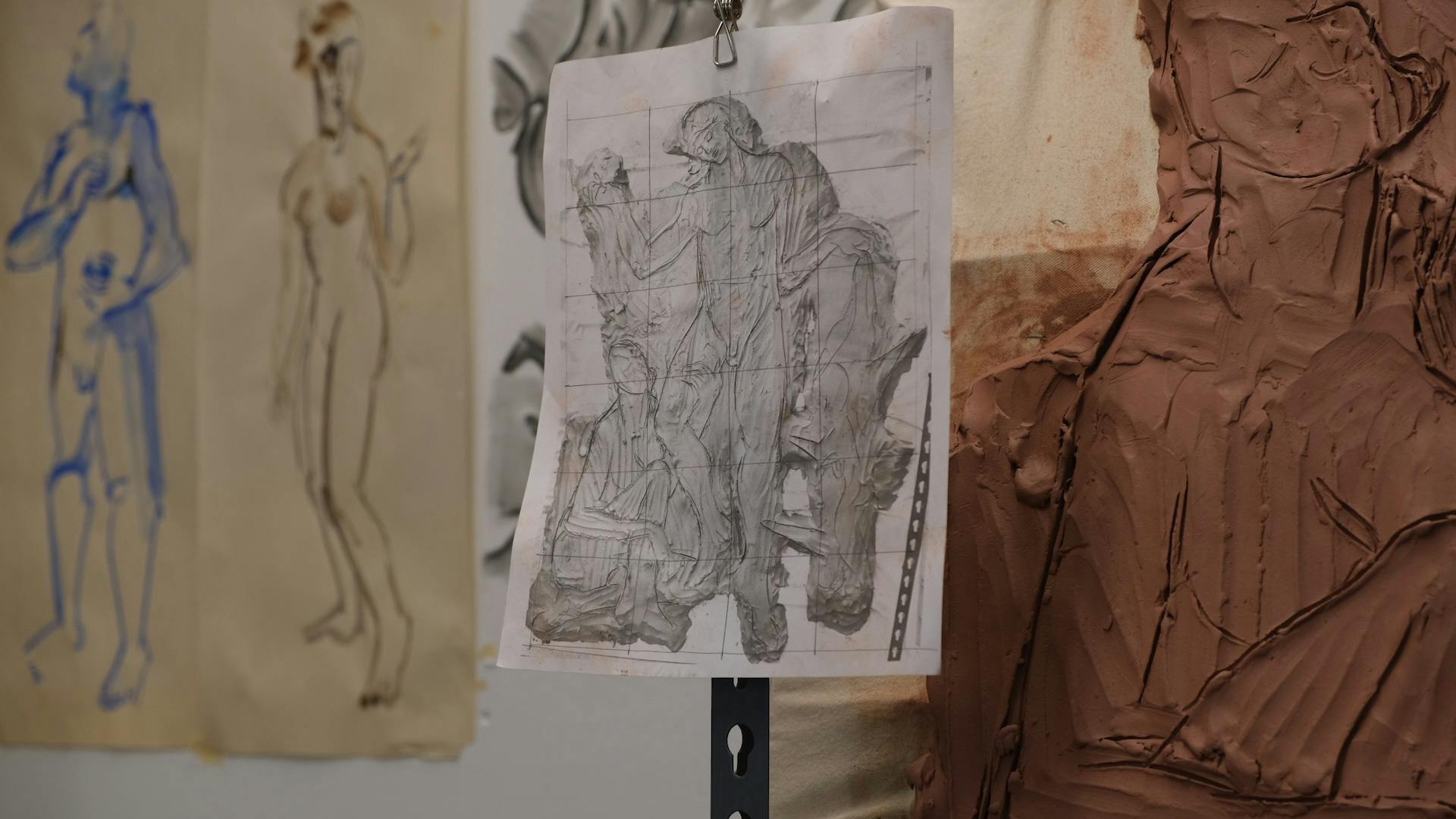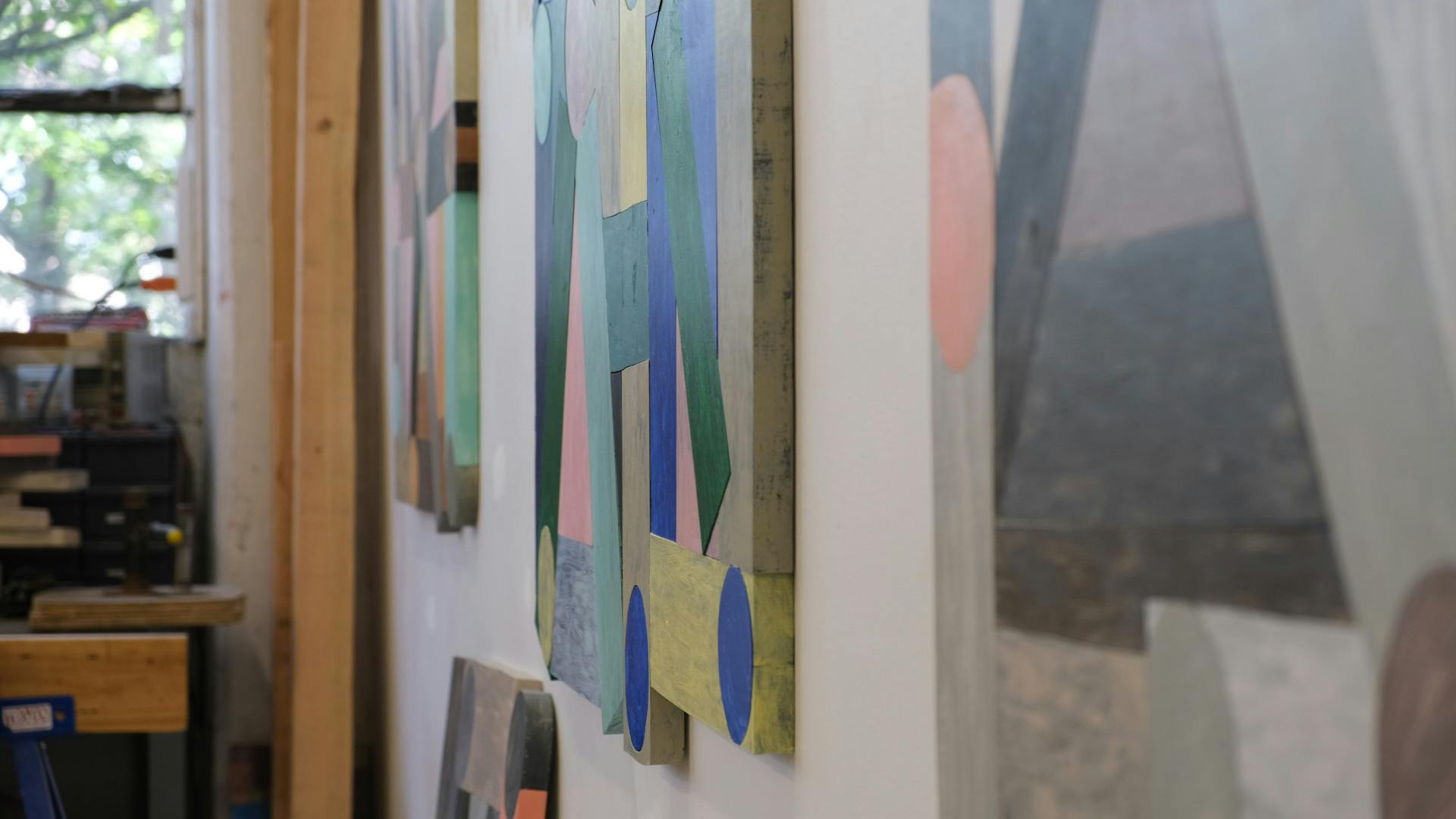Published October 28, 2022
Understanding How Artwork is Priced
Given the diversity of artists and mediums, there is no simple formula for determining the value of artwork.
To first understand pricing, the respective definitions for the primary and secondary markets must be acknowledged. A sale in the primary market occurs when an artwork is sold to a collector for the first time either from the gallery or artist directly. If that work is sold again, often through an auction, then that is said to occur within the secondary market. Both the primary and secondary market use different and occasionally competing pricing mechanisms.
The challenge of pricing artwork in the primary market is compounded by the lack of transparency in the art world, where prices for emerging artists are often only available upon request. Despite this difficulty, artists, collectors, and gallerists use a common framework to set pricing.
Artist Considerations
As we explored in our guide, Honing Your Eye for Talented Artists, the process of identifying talent in art is incredibly subjective. However, artists are often assessed on how they push their visual language forward and how they navigate their career.
Artists who have carved out a style all their own are the most celebrated and often highest valued. The evolution of this style is contextualized by the concepts and themes explored by the artist in their early work. Those ideas are then used as a lens through which the work is examined chronologically. Growth is evaluated in terms of not only how they explore these themes but also formal techniques. As artists continue to progress toward mid- career status, the visual language should emerge as their own and not follow a trending style or theme.
Although certainly not an alternative to viewing the work, a CV is often a helpful reference to understand how an artist has navigated their career, which will inform their prices. Industry insiders, such as curators, gallerists, and other artists, will admire those who carefully consider the context of how their work is shown and whether the platforms, galleries, or spaces have the mutual respect of other artists. These insiders can influence the decisions of institutions such as museums regarding the inclusion of the work in exhibitions or permanent collections. All these factors can impact price for artists and their work.
Artwork Considerations
As with any object being offered for sale, the characteristics of an individual piece can also impact the price. This can include attributes such as:
- Size: Generally, the price will be higher the larger the scale of the artwork
- Materials: Works that integrate expensive materials such as marble or bronze will often carry higher prices.
- Fixed costs: The need of equipment such as a kiln or furnace can drive up the cost to create the work, leading to an increase in the price. Some artists may employ specialized fabricators to realize their vision. Framing artworks can also be an expense for flat works.
- Editions: For numbered editions, the smaller the run, the higher the price, as smaller runs increase the rarity.
Industry Convention
When an artist has an established sales history, the pricing exercise is easier as the prices will be relative to previous sales. Like most industries, supply and demand will inform the pricing decisions by galleries and artists. If a show sells out and a waitlist develops, both parties understand that there is sufficient demand to increase price.
However, the degree of the price increase is more nuanced. Although one may assume that an extensive waitlist will instantly and significantly increase price, galleries and artists tend to favor slow and steady price increases to prevent heightened speculation that would alienate the existing collector base. Unlike financial and commodity markets, where investors understand prices will rise and fall in the short term but increase in the long run, art collectors ideally prefer to see prices that rise and can view any pullback in prices as a black mark on an artist’s career. Despite the protective intent, these fears of speculation result in discretion surrounding the availability of prices, which contributes to the overall opaqueness of the art market.
For emerging artists, who are likely just beginning to show their work in group shows, their previous sales are likely personal ones to friends and family. The challenge of pricing this work is more pronounced. Within New York City, standard convention for galleries showing emerging artists tends to use size as the foundation with an understanding that the final price will be adjusted depending upon the above artist and artwork considerations.
Challenges of the Secondary Market
Given the more widespread availability of secondary market prices, auction results tend to dominate the discussion surrounding the health of the art market. Most other pricing trend evidence is anecdotal from discussions with gallerists. Unfortunately, this practice of prioritizing auction data can conflate systemic (market) risk as idiosyncratic (individual). As a discrete data point for an artist, auction results should be viewed with a healthy dose of skepticism.
Today, auctions at Sotheby’s and Christie's are an exciting form of entertainment in their own right. The pressure of competition and time compounded by ego can lead to irrational prices set at auction. Auctions give collectors who may not have either a relationship with galleries or the artist the opportunity to jump the waitlist.
A record auction price may initially seem like a boon for an artist, but this can equally produce significant anxiety. Kelly Crow, in her profile of artist Anna Weyant for the Wall Street Journal, noted:
“If prices jump too dramatically at auction, young artists fear their initial bench of collectors won’t be willing or able to keep pace with huge price leaps. This can gut demand if wealthier collectors at auction pivot to other artists. Just as in music or the movies, no visual artist wants to wind up a one-hit wonder."
For these emerging artists, there may not be sufficient demand in the primary market to sustain the price achieved at auction. Therefore, galleries seek to carefully control the placement of artwork in the primary market. Flipping, or quickly selling an artwork for profit, is thoroughly discouraged (and oftentimes punished) because of the potential for a negative impact on the career of an artist.
Our Commitment to Transparency
The lack of transparency and secondary market pricing model are imperfect solutions to the art market. At Testudo, we are committed to price transparency as we believe it enables collectors and artists to more effectively make informed decisions. Using this framework on pricing strategy, we offer direct guidance for each artist on the platform to appropriately price their work.
We believe that our secondary market offers peace of mind for collectors and opportunity for artists. If the need arises, we will help collectors find a new loving home for an artwork. Our continuous market, unburdened by the pressure of auctions, will remain more orderly and rational. For artists, we offer the opportunity to participate through a 5% resale royalty, which transforms the anxiety surrounding the secondary market to a source of empowerment.

